This is an extensive overview of gold in the major religions: Its spiritual significance, ritual use, writings, temples and others. Religions covered: Judaism, Christianity, Islam, Buddism, Hinduism, Shamanism, New Age, classical beliefs (in Egpyt, Inca Empire and old Norse).
Jump right to the article below.
Infographic about the gold and religion:

Contents
- Part 1: Gold in Religion and Spirituality: General Overview
- Part 2: Gold in Judaism: A Lustrous Thread in the Fabric of Faith
- Part 3: Christianity and Gold: A Shimmering Nexus of Divinity and Spirituality
- Part 4: Islam and Gold: A Tapestry of Restrained Adornment and Majestic Artistry
- Part 5: Hinduism and Gold: Divine Wealth, Earthly Prosperity, and Health
- Part 6: Buddhism and Gold: The Path of Enlightenment Paved in Gold
- Part 7: Gold in Ancient Civilizations: Divine Connections and Mythologies
- Part 8: Gold in Shamanism: Divine Connections and Healing
- Part 9: Gold in Spirituality: New Age Beliefs
- Part 10: Modern Interpretations and Uses of Gold in Religion
- FAQs
Part 1: Gold in Religion and Spirituality: General Overview
Gold: More than just a Precious Metal
Throughout human history, the allure of gold has extended far beyond its status as a precious metal. Known for its radiance, durability, and malleability, gold has served as an important symbol across cultures and religions since at least 4000 BC. This enduring appeal is closely tied to several key attributes:
- Purity: Gold’s resistance to tarnish and corrosion makes it a fitting symbol of spiritual and moral purity.
- Glory: The unmistakable radiance of gold is often associated with divine glory, wisdom, and enlightenment.
- Divinity: Owing to its rarity and value, gold is frequently linked to the divine and is commonly used in offerings to deities.

Gold’s Role in Rituals and Sacred Artifacts
The use of gold in religious rituals and the creation of sacred artifacts is widespread. From vessels and ornaments to icons and temples, gold has been the material of choice for religious rites and sacred structures across civilizations. Several historical examples highlight this point:
- Ancient Egypt (c. 3000 BC): The Egyptians used gold extensively in their temples and burial rituals. This is exemplified by the golden mask of Tutankhamun (1323 BC), a world-renowned artifact discovered in 1922.
- Ancient Greece (c. 1600 BC): Gold played a crucial role in Greek religious rites, as evidenced by the multitude of gold objects found in the archaeological site of Mycenae.
These uses of gold underscore not only its symbolic significance but also its practical properties. Gold’s durability and malleability make it ideally suited for creating lasting, intricate designs.
Read about the history of gold from 4600 BC to the 21th century.
Quick Facts about Gold and Religion
| Fact | Explanation |
|---|---|
| Gold’s Symbolism in Christianity | In Christianity, gold often symbolizes divine wisdom and the glory of heaven. This can be seen in biblical depictions of heaven, which is often described as a city with streets made of gold. |
| Gold’s Use in Islamic Architecture | The golden Dome of the Rock in Jerusalem is a prime example of gold’s use in religious architecture. The dome is coated in gold, symbolizing the sanctity of the site. |
| Gold in Buddhist Art | In Buddhism, gold is often used to adorn statues of the Buddha, symbolizing enlightenment. This can be seen in the Temple of the Golden Buddha in Thailand, which houses a massive statue of Buddha made from solid gold. |
| Gold in Hindu Rituals | Gold plays a significant role in Hindu rituals, especially in weddings. Gold jewelry is considered auspicious and is a vital part of a traditional Hindu wedding ceremony. |
| Gold in Ancient Egyptian Religion | In ancient Egyptian religion, gold was associated with the sun and divinity. This is evident in the many gold artifacts found in Egyptian tombs, such as the famous mask of Tutankhamun. |
| Gold in Zoroastrianism | In Zoroastrianism, gold is considered pure and sacred. It is often used in fire altars and in the crafting of sacred utensils. |
| Gold in Baháʼí Houses of Worship | The Baháʼí Houses of Worship are renowned for their golden domes. These domes, covered in gold, symbolize divine knowledge and unity. |
| Gold in Shamanic Rituals | In Shamanism, gold is often used in amulets and talismans for its perceived healing energy and connection to the divine. |
| Gold in the Ark of the Covenant | The Ark of the Covenant, as described in the Bible, was overlaid with pure gold, symbolizing its divine significance. |
| Prohibition of Gold in Islam | In traditional Islamic law, men are prohibited from wearing gold jewelry or silk. These materials are seen as an excessive display of wealth and are thus reserved for women. |
The Golden Rule: An Ethical Guideline
In the sphere of ethics, gold holds a prominent place in the form of the Golden Rule. This ethical maxim, often summarized as “do unto others as you would have them do unto you”, is a fundamental principle found in many religions around the world. It serves as a guide for moral behavior, emphasizing values such as:
- Empathy: The rule encourages understanding and sharing the feelings of others.
- Mutual Respect: It promotes the idea of treating others with the same respect and kindness you would wish to receive.
- Reciprocity: It fosters a sense of mutual aid and cooperation among individuals.
From the teachings of Jesus Christ in 30 AD (“Do unto others as you would have them do unto you.”) to the Analects of Confucius circa 500 BC, the Golden Rule has been a beacon of moral guidance across civilizations and eras.
In conclusion, the role of gold in religion and spirituality is multi-faceted and significant. As a symbol, a material, and an ethical principle, gold continues to resonate in the religious and spiritual practices of cultures worldwide, affirming its enduring spiritual significance.
Part 2: Gold in Judaism: A Lustrous Thread in the Fabric of Faith
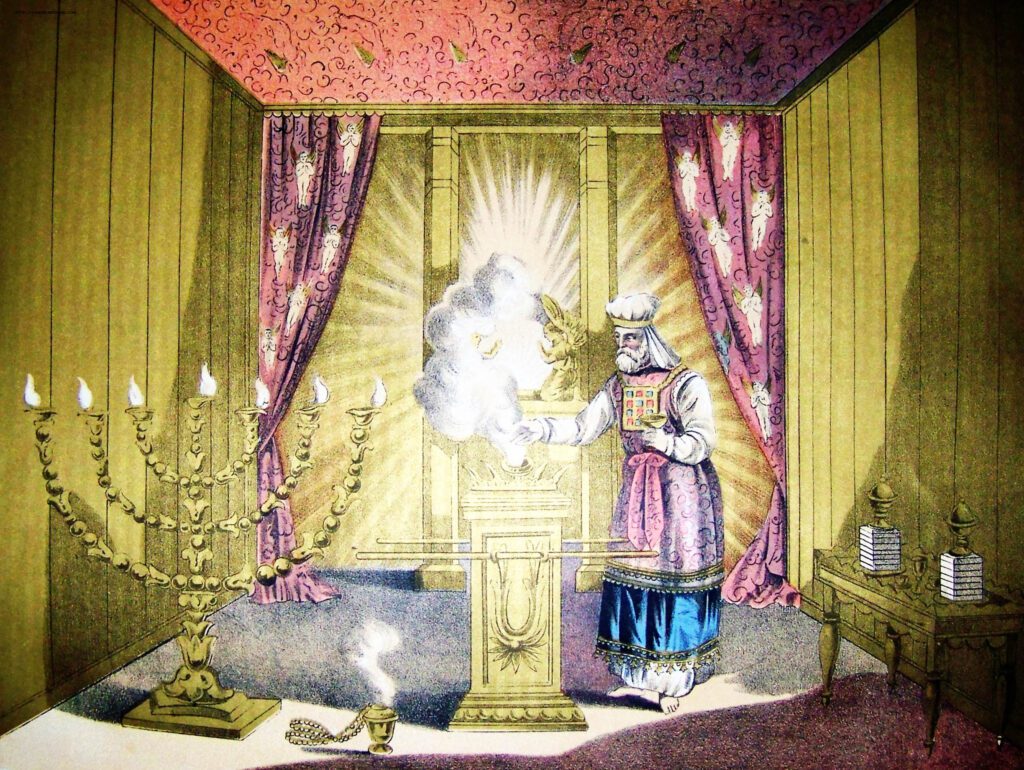
Gold: An Emblem of the Sacred
Gold is a precious metal that holds symbolic significance in Judaism. Here are some key points about gold in Judaism
- Symbolism: Gold is a highly regarded precious metal in Judaism, as in other cultures. However, it was occasionally avoided due to its association with the sin of the golden calf. Gold in the Bible is the symbol of purity, nobility, and great value.
- Use in the Mishkan: Also known as tabernacle. This is the portable earthly dwelling place of Jaweh. Gold covers the Mishkan and its furniture.The High Priest, who leads the service, wears a breastplate adorned with 12 precious stones, including gold.
- Purpose: The Talmud states that gold’s purpose was only for use in the Holy Temple. There was a need for a Sanctuary, a place for G‑d to be revealed. If the Sanctuary would be built of less precious materials, it would not be a fitting place for the Divine Presence.
- Metaphor: In Judaism, gold would represent a source of religious teachings by men which is considered more precious than the word of God. However, King David famously said that the Torah is more precious than gold.
Golden Narratives in the Hebrew Bible

Gold is deeply embedded within the Hebrew Bible, also known as the Torah. Its presence in these ancient texts testifies to its enduring spiritual importance. Gold is mentioned 50 times in the Torah (Terumah and Tetzaveh):
- Ark of the Covenant: The Holy Ark, as described in the Book of Exodus, was constructed from acacia wood and overlaid inside and out with pure gold. As the sacred chest housing the tablets of the Ten Commandments, the Ark embodied God’s covenant with Israel. The extensive use of gold emphasized the Ark’s sanctity and divine origin.
- Menorah: The Menorah, a seven-branched candelabrum made from a single piece of pure gold, served as a central artifact in the ancient Holy Temple in Jerusalem. The Menorah’s gold construction underscored its significance as a beacon of divine wisdom and the eternal presence of God. In the book of Exodus (25:31-40), God provides Moses with detailed instructions on how to craft the Menorah for use in the Tabernacle, the portable earthly dwelling place for the divine presence.
- Golden Calf: In stark contrast, the story of the Golden Calf in Exodus 32 serves as a powerful caution against idolatry. Despite being crafted from gold, the calf was rejected as a false deity, highlighting that gold’s value lies not in the metal itself but in its meaningful and proper use in the service of God.
Gold: Inextricable from Jewish Ritual Objects
Gold’s significance within Judaism extends into the realm of religious rites and ritual objects. Its presence in these sacred items attests to gold’s enduring spiritual value:
- Torah Crowns: A Torah Crown, also known as a “Keter Torah” in Hebrew, is a decorative ornament placed on the uppermost part of a Torah scroll, which is the holiest book within Judaism containing the first five books of the Bible. It’s called a “crown” due to its circular shape and the way it adorns the top of the Torah, similar to how a crown sits on a monarch’s head. Torah crowns are typically made of silver or gold and are often elaborately decorated with intricate designs, semi-precious stones, and symbols from Jewish iconography. They serve as a testament to the high esteem and respect the Jewish community holds for the Torah.
- Breastplates: The High Priest’s breastplate, known as the Hoshen, was meticulously designed with gold settings and precious gemstones representing the tribes of Israel. The Hoshen was attached to the Ephod, another piece of the High Priest’s garments, by gold chains attached to gold settings. The use of gold and precious stones underscores the importance and sacredness of these priestly garments in the religious practices of ancient Israel.
- Wedding Ceremonies: In Jewish wedding ceremonies, gold is a traditional choice for wedding rings because it was long thought of as the most valuable metal. However, while traditionally made of gold, the ring used in a Jewish wedding may be of any appropriate metal, such as silver or platinum.
Part 3: Christianity and Gold: A Shimmering Nexus of Divinity and Spirituality
Gold is mentioned 417 times in the Bible, and it is often associated with wealth, royalty, and permanence.
The virtues of Gold in Christianity
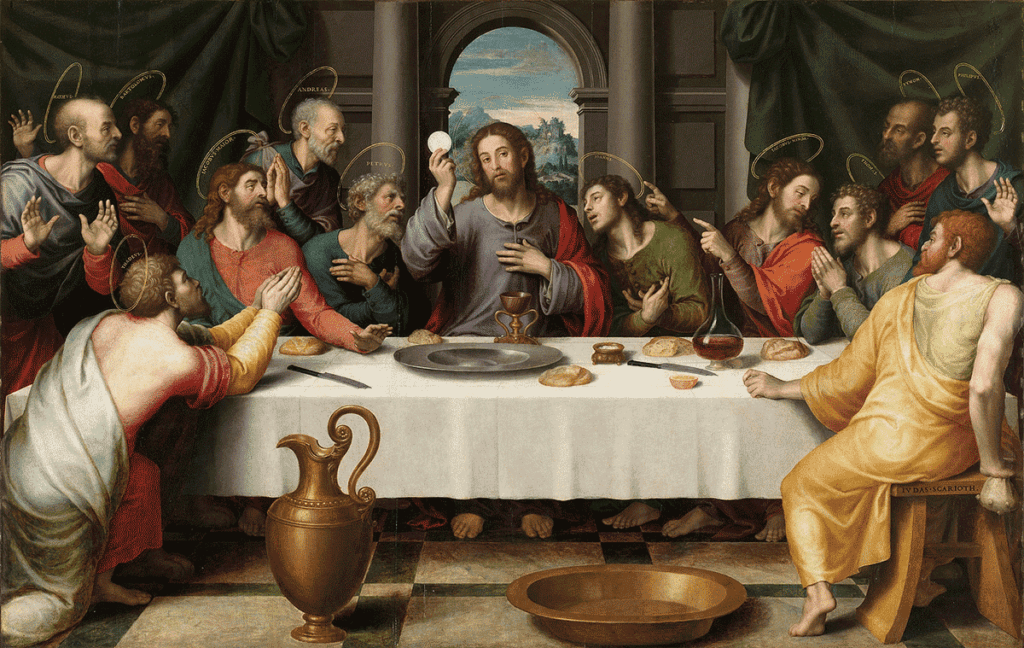
- The Bible mentions kings and queens being paid in gold and silver, and owning gold is compared to acquiring knowledge, wisdom, and faith, which are considered more valuable. Gold is also associated with superiority and value, but God is considered of infinitely higher worth than any earthly standard.
- In the Bible, gold is used to symbolize earthly riches, and it is finer than any other material
- The accoutrements of royalty, such as scepters and crowns, were made of gold. The wise men’s gift of gold to Jesus was a symbolic act, declaring him to be a king. Gold is also used to symbolize the wealth of nations and of brotherhood born out of discipline, restraint, and integrity.
- Gold is considered a sacred store of value that always protects wealth, transcends time, and is everlasting. It is believed to have been created by God and bestowed upon Earth. Gold is also used to symbolize God’s value and beauty, and it is associated with the purifying of faith.
Gold in Biblical Narratives
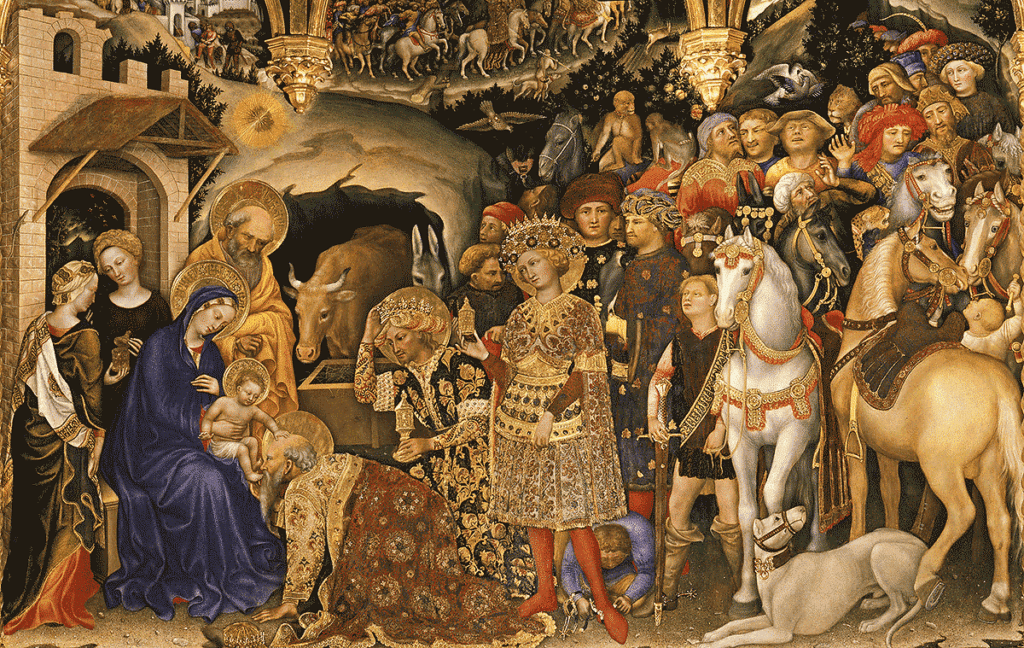
Gold features prominently in many biblical narratives, serving as a powerful symbol in both Old and New Testament stories:
- Solomon’s Temple: Described in the Bible as lavishly adorned with gold, Solomon’s temple was seen as a manifestation of God’s divine blessings and the dwelling place of His presence.
- Streets of Heaven: In the Book of Revelation, Heaven’s streets are described as “pure gold, like transparent glass,” signifying the incomparable beauty and divine perfection of the celestial realm.
- Gifts of the Biblical Magi: The gold offered to Jesus by the wise men from the east serves to acknowledge Jesus’s divine kingship and noble lineage. The inclusion of gold among these gifts highlights its value in society at the time.
Yet gold also serves as a cautionary symbol in the Bible. The Golden Calf incident in Exodus, for example, warns of the spiritual dangers of idolatry and misuse of gold.
Gold is also mentioned in various biblical proverbs, such as Proverbs 25:11, which says: “A word fitly spoken is like apples of gold in pictures of silver.” This implies that words, when used appropriately, are as valuable as gold.
Gold in Christian Art and Symbolism: Enhancing the Sacred
Check out the video: Applying gold leaf in Byzantine Frescos.
The use of gold in Christian art, symbolism and liturgy – the public worship tradition within the Christian Church – is widespread. It plays a significant role in creating a sacred atmosphere and enhancing the aesthetics of worship:
- Gold Leaf in Icons and Frescoes: In Christian iconography – the creation and use of religious images – gold leaf is often used to decorate icons and frescoes. The use of gold leaf is intended to evoke a sense of divine presence and illuminate the sacred stories they depict.
- Liturgical Implements: Many implements used in Christian liturgy, such as chalices, ciboria, and patens, are made of or plated with gold. These sacred items made from gold elevate the perceived sanctity of the rites and rituals they are part of.
- Iconoclasm: During periods of iconoclasm – the deliberate destruction within a culture of its own religious icons and other symbols or monuments – gold still maintained its respect. Even when many religious images were destroyed, gold was often preserved in the form of cross icons or elements of religious architecture.
Gold in Christian Mysticism: The Pursuit of Divine Connection
Gold also features prominently in Christian mysticism, symbolizing the pursuit of spiritual enlightenment and a deeper connection with the divine:
- Medieval Christian Ceremonies: Gold was often used in medieval Christian ceremonies to decorate liturgical vestments and church interiors, adding a sense of splendor to these religious occasions.
- The Holy Grail: Often depicted as a golden chalice, the Holy Grail serves as a symbol of the Last Supper and Christ’s sacrifice. It represents the quest for spiritual enlightenment and the attainment of divine grace.
Overall, gold is an important symbol in Christianity, representing wealth, royalty, permanence, and the value of faith and knowledge.
Part 4: Islam and Gold: A Tapestry of Restrained Adornment and Majestic Artistry
Within Islam, the role of gold is richly nuanced, balancing careful prohibitions and spiritual symbolism with artistic expression and architectural splendor. Compared to the Bible and the Torah, gold is mentioned less often. Gold occures around 10 times in the Quran (depending the translation).
Gold in the Quran: Rewards for the Righteous
In the Quran, Islam’s holy book, gold often signifies divine reward in the hereafter. Verses, or ayat, such as “Therein are brought round for them trays of gold and goblets…” (Surah 43:71) depict gold as part of the heavenly rewards for the righteous. Yet, gold’s earthly use is characterized by certain boundaries:
- Men’s Prohibition from Gold: Islamic jurisprudence (fiqh) dictates that Muslim men are prohibited from wearing gold jewelry. Based on Hadith (the Prophet Muhammad’s sayings), this rule promotes a sense of modesty and simplicity in personal adornment. Muslim women on the other hand are allowed to wear gold.
- Discouraging Ostentation: Islam discourages the misuse of gold to flaunt wealth or promote social inequality. Such ostentation, or riya, is seen as detracting from the genuine worship of Allah.
Gold in Islamic Architecture: The Majestic Glimmer
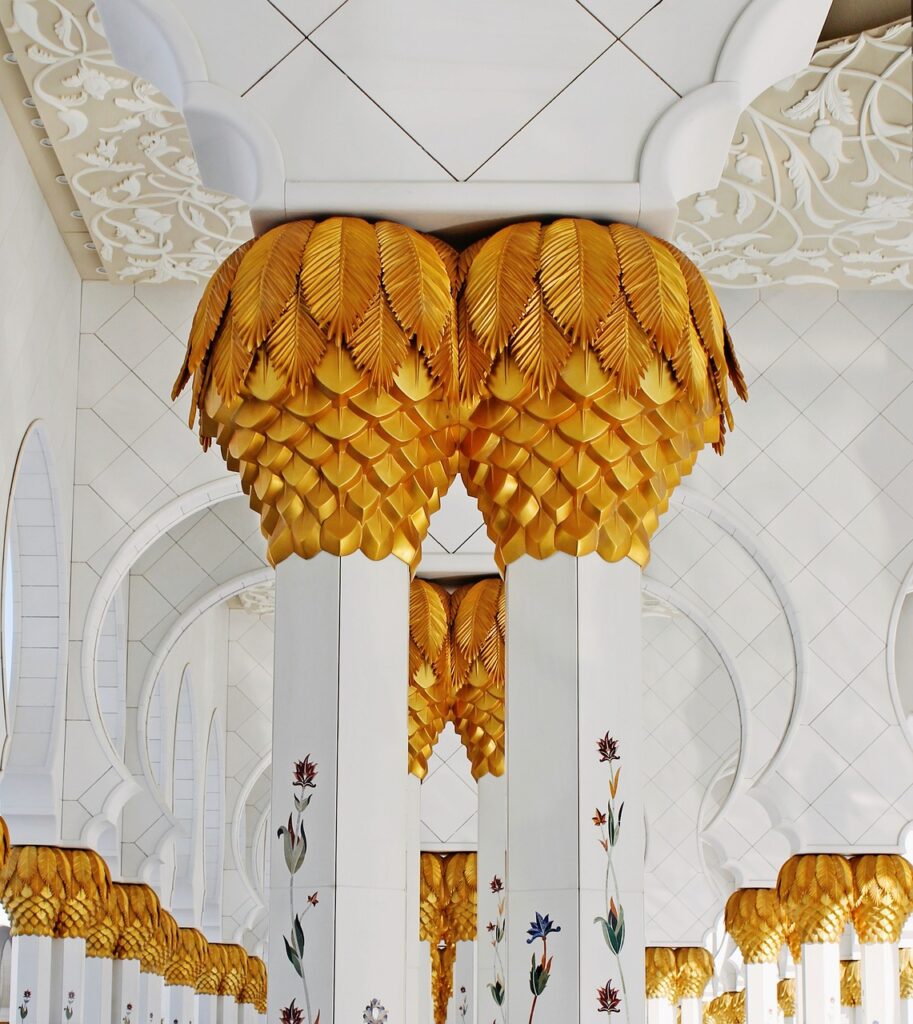
Gold is employed in the design and ornamentation of Islamic architectural elements, such as domes, minarets, and intricate geometric patterns.
- Dome of the Rock, Jerusalem: This historic Islamic shrine in Jerusalem boasts a magnificent gold-plated dome. The golden dome, first completed in 691 AD, was later refurbished 1959 – 1962 with gold-plated anodized aluminum, symbolizing a synthesis of ancient tradition and modern technology.
- Sheikh Zayed Grand Mosque, Abu Dhabi: The Sheikh Zayed Grand Mosque, one of the largest mosques in the world, incorporates gold accents in its intricate calligraphy and decorative elements.
- Alhambra, Spain: The Alhambra, a palace and fortress complex in Granada, Spain, showcases intricate Islamic architectural designs with gold accents
These examples highlight the prominent use of gold in Islamic architecture, showcasing its role in enhancing the beauty, grandeur, and reverence of these architectural masterpieces.
Islamic Calligraphy: Writing in Gold
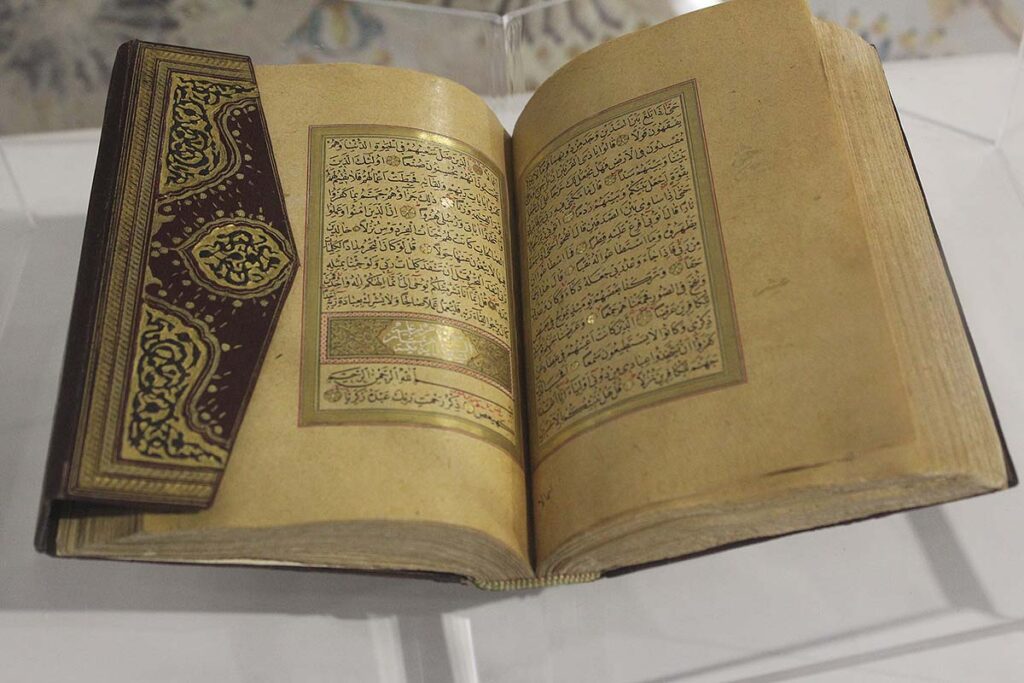
Islamic art, particularly calligraphy, often uses gold to enhance its aesthetic appeal. Here are a few notable instances:
- Quranic Manuscripts: Several historical Quranic manuscripts feature gold calligraphy. The Blue Quran, for instance, is a renowned 9th-10th century CE manuscript featuring gold Kufic script on indigo-dyed parchment, exemplifying the Quran’s reverence through the luxurious use of gold.
- Mosque Decorations: Many mosques around the world feature gold calligraphy on their walls or domes. For example, the Grand Mosque of Mecca displays golden calligraphy on its black silk-covered Kaaba, serving as a spiritual and visual focal point for Muslims worldwide.
Check out the video: Paint Islamic Calligraphy in Gold:
Aniconism and Iconoclasm: Abstract over Representational
Islamic tradition generally encourages aniconism, the avoidance of representational imagery in religious spaces, while iconoclasm refers to the intentional destruction of such imagery:
- Aniconism: In line with aniconism, Islamic art often veers away from figurative depictions, instead embracing abstract, geometric designs, and calligraphy. Gold is frequently employed in these abstract designs, beautifying Islamic manuscripts and architectural embellishments.
- Iconoclasm: During historical phases of Islamic iconoclasm, potentially idolatrous images were destroyed. Yet, abstract and non-figurative art forms, often enriched with gold, remained untouched and even revered.
Overall, gold is an essential element in Islamic art and symbolism, representing the most precious metal, transcendent symbolism, and earthly connotations. It is used in various forms of art, including calligraphy, manuscripts, and liturgical vessels.
Part 5: Hinduism and Gold: Divine Wealth, Earthly Prosperity, and Health
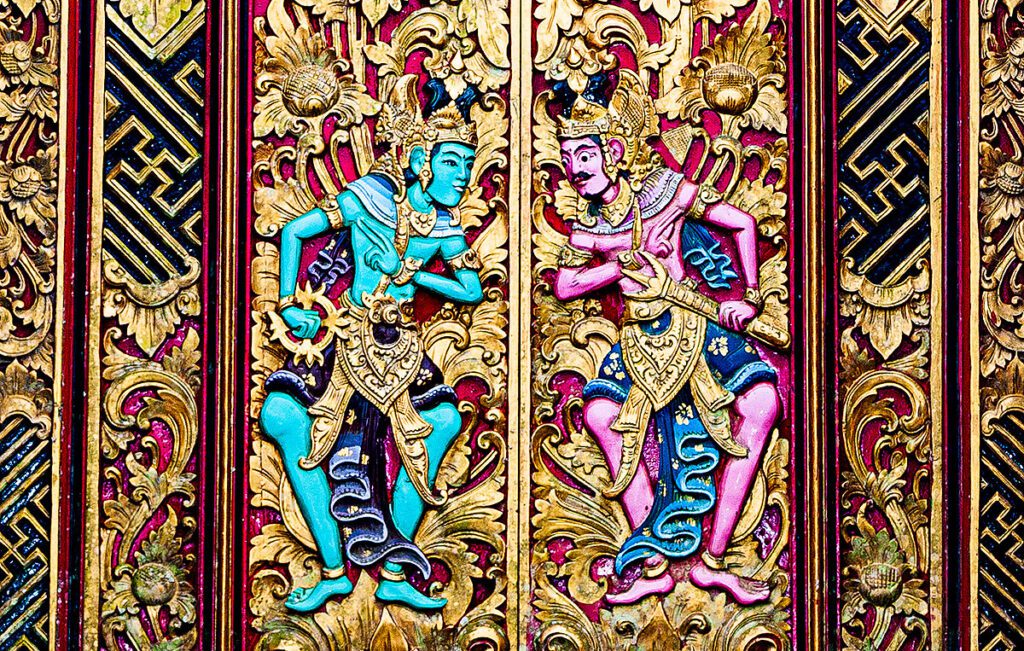
Gold holds significant importance in Hinduism and is associated with various beliefs and practices. Here are some of the key beliefs and practices related to gold in Hinduism:
Symbol of Goddess Lakshmi
Gold is inextricably linked to the Hindu pantheon. Lakshmi, the Goddess of Wealth (among other things), is often portrayed with gold coins pouring from her hands, indicating her power to bestow prosperity. Furthermore, Hindu gods and goddesses are frequently described in scriptures as adorned in gold, accentuating their divine status.
Mythological Significance
According to Hindu mythology, gold is considered the soul of the world, and legends say that in a gloomy and lifeless world, the creator used gold to create life and light. The Golden Lotus, mentioned in the Padma Purana, represents spiritual awakening and divine beauty, and the Golden Womb or “Hiranyagarbha” symbolizes the source of creation in the Rig Veda, one of the oldest Hindu scriptures.
Spiritual Significance
Gold is considered the most sattvik (Sattva-predominant) among all the metals and is believed to destroy harmful germs in the body. It is also said to imbibe sattvik and Chaitanya enriched waves and emit them into the atmosphere with equal speed, leading to the preservation of Chaitanya enriched waves in the form of Tej-tattva (Absolute Fire Principle)
Ritual Significance: From Statues to Ceremonies

Gold plays a central role in Hindu rituals and ceremonies:
- Statues and Temples: Gold-plated statues of deities are commonplace in Hindu temples, their shine symbolizing divine purity. Many temples feature gold domes or decorations, such as the Golden Temple in Vellore, Tamil Nadu.
- Religious Ceremonies: Gold is pivotal in Hindu ceremonies like weddings, where brides are adorned with gold jewelry believed to bring fortune and prosperity. During the festival of Akshaya Tritiya, buying gold is considered auspicious.
- Offerings and Gifts: Gold coins or jewelry are often offered to deities or gifted during festivals and milestones, representing blessings of prosperity and success.
Gold: Health Benefits and Ayurveda
Gold also intersects with health practices within Hindu tradition. In Ayurveda, a holistic healing system rooted in India, gold or “Swarna Bhasma” (gold ash) is used in certain treatments, believed to provide rejuvenation and enhance longevity.
Social Significance: Wealth and Status

In the societal sphere, gold holds immense importance:
- Investments and Security: For many Hindu families, buying and holding gold serves as a form of financial security and a status symbol, reflecting a practice ingrained over centuries.
- Adornments: Gold jewelry, apart from being a fashion statement, is considered a symbol of wealth and social standing.
In summary, gold is considered a symbol of wealth, fortune, and prosperity in Hinduism, and is associated with various festivals, weddings, and other family celebrations. It is also believed to have spiritual significance and the power to purify anything it touches.
Part 6: Buddhism and Gold: The Path of Enlightenment Paved in Gold
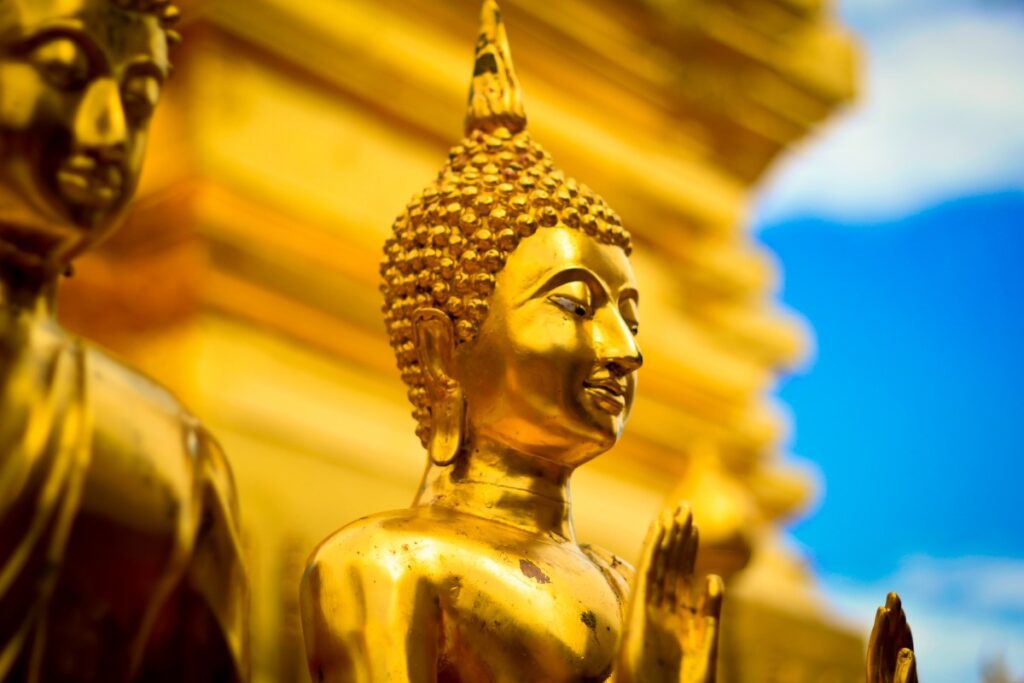
In Buddhism, gold holds significant symbolism and importance. Here are some key points about the relationship between Buddhism and gold.
Gold in Buddhist Art: From Temples to Thangkas
Gold finds extensive application in Buddhist art, signifying the profound spiritual states of purity and enlightenment. This expression manifests in various forms, from the splendid ornamentation of temples to the delicate accents in traditional artworks.
- Gold Leaf on Statues: The act of adorning Buddha statues with gold leaf is a time-honored practice in Buddhism. It underscores the exalted enlightened state of the Buddha, and the application of the gold leaf is seen as an act of merit, reflecting the purity and nobility of Buddha’s teachings.
- Gold in Temples and Pagodas: Buddhist temples and pagodas around the world showcase gold in their designs and structures. For example, the Shwedagon Pagoda in Myanmar is a gilded spectacle, symbolizing the Buddhist ideals of wisdom and enlightenment.
- Thangka Paintings: Thangka, a Tibetan Buddhist art form, often features gold for delicate patterns and highlights, lending the paintings an added layer of spiritual significance. These intricate designs serve as meditation tools, with gold accents guiding the practitioner’s focus.
Gold and Meditation: Tranquility in the Golden Hue
In the realm of Buddhist meditation, gold often has a role to play. Its warm, calming glow is believed to enhance focus and concentration, promoting tranquility of the mind. Meditation rooms are sometimes adorned with golden hues, considered conducive to cultivating serenity and mindfulness.
Wat Traimit: The Golden Buddha
The Wat Traimit temple in Bangkok houses the world’s largest solid gold Buddha statue, a testament to gold’s spiritual value in Buddhism. This awe-inspiring statue, weighing a staggering 5.5 tons and standing nearly five meters tall.
Offerings and Decorations: Expressed in Gold

Buddhist rituals and ceremonies often incorporate gold as a symbol of reverence and devotion.
- Gold Foil Offerings: Devotees apply small gold foils on Buddha statues as a mark of respect and merit-making. This ritualistic offering is seen as a means to accumulate positive karma.
- Decoration in Festivals: Vesak, commemorating Buddha’s birth, enlightenment, and death, is rich with golden decorations. Devotees adorn temples with golden lanterns and garlands, reflecting their devoutness and joy.
Symbolism of Gold in Buddhism: A Journey to Enlightenment

Gold in Buddhism carries symbolic weight, representing spiritual wealth, wisdom, and the journey to enlightenment. In the Jataka tales, stories about Buddha’s previous lives, gold often serves as a metaphor for spiritual and moral lessons, guiding the practitioner towards the path of enlightenment.
To sum up, gold’s significance in Buddhism is manifold and deeply ingrained in its traditions, rituals, and teachings. Whether through the resplendent gold-leaf covered Buddha statues, the serene golden-hued meditation rooms, or the symbolic golden tales from Buddha’s lives, gold in Buddhism signifies a journey towards enlightenment, purity, and spiritual wisdom.
Part 7: Gold in Ancient Civilizations: Divine Connections and Mythologies
The history of human civilization is adorned with the lustrous allure of gold, a metal that has been long associated with divinity, purity, and immortality. Each civilization had its own unique interpretations and uses of gold, weaving it into their cultures, religious practices, and mythologies.
Ancient Egypt: The Divine Metal of the Pharaohs

In Ancient Egypt, gold was considered an “indestructible” material and was linked to the sun, a powerful symbol in Egyptian mythology.
- Sun God Ra: The radiant and undying shine of gold was associated with Ra, the sun god. According to the ancient Egyptians, Ra journeyed across the sky in a boat symbolizing the life-giving power and eternal nature of the sun. He is sometimes described as an aging king with golden flesh.
- Pharaohs and Gold: Gold was intricately linked with the pharaohs, who were believed to be divine. The Pharaoh’s palace was often referred to as the “Golden House,” while death masks of the pharaohs, such as the famous mask of Tutankhamun, were made of solid gold, a testament to their eternal divine connection.
Overall, gold was considered a divine and indestructible metal in ancient Egyptian mythology, associated with the sun, immortality, and the power of the gods.
Read more about Ancient Egypt and gold in the article about the history of gold.
Inca Empire: Reverence for the Sweat of the Sun
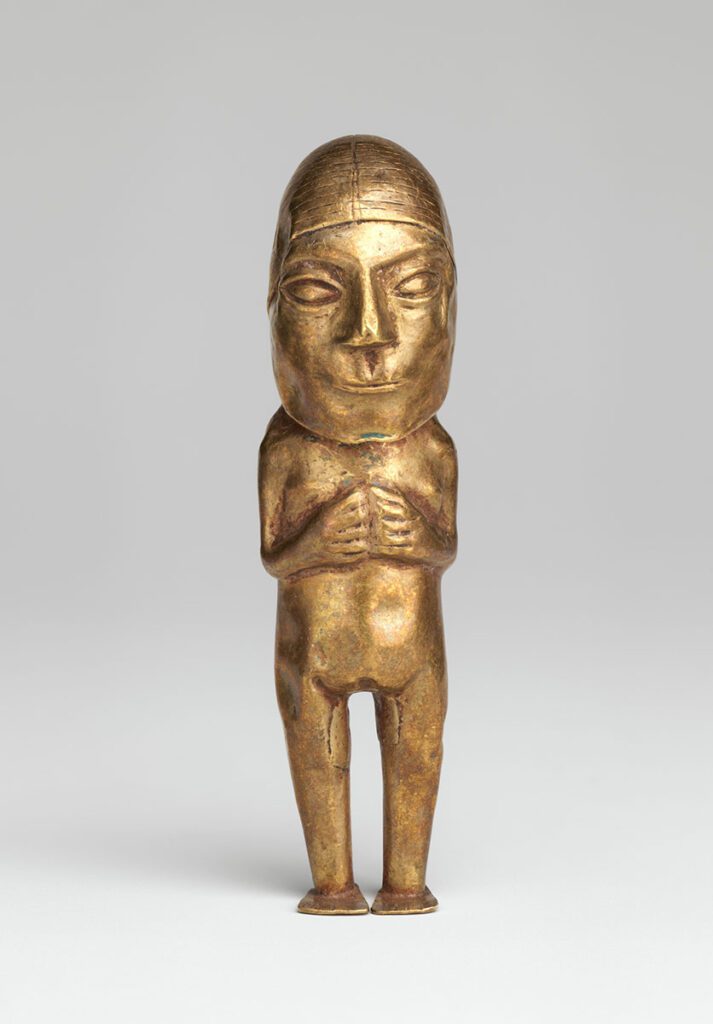
The Inca Empire, often called the “Empire of Gold,” had a profound reverence for this precious metal, which they referred to as the “sweat of the sun”.
- Temples of the Sun: The most significant testament to the Incas’ adoration of gold was the Coricancha, the Golden Temple. It was said to have been covered in gold, reflecting the glory of the sun god Inti.
- Offerings to the Gods: The Incas often made offerings of gold figurines to their gods during religious festivals. These figurines represented humans, animals, and crops and were buried as offerings to ensure prosperity and good harvests.
Ancient Greece: Power, Wealth, and Divine Favor
In Ancient Greece, gold was considered precious to the gods in ancient Greece, to the extent that they were dressed in gold
- Golden Fleece: The Golden Fleece, a symbol of kingship and divine authority, plays a central role in the myth of Jason and the Argonauts.
- Midas’ Golden Touch: King Midas is known for his ability to turn everything he touched into gold, a gift from Dionysus that turned into a curse, symbolizing the dangers of unchecked greed and desire.
- Chrysus: The minor god of gold, Chrysus, personified wealth and affluence in ancient Greek literature.
Read more about Greece and gold in the article about the history of gold.
Norse Mythology: The Lustre of Divine Power

Gold in Norse mythology was a marker of divine power and immense wealth:
- Freyja: In Norse mythology, gold was often associated with wealth and abundance. Freyja, the goddess of love, sex, war, and magic, was continually linked to gold and treasure. She was believed to be able to produce treasure, and had an affinity for beautiful, often priceless objects or treasures
- Role in Norse Mythology: Gold played a significant role in Norse mythology, as it was often used to create magical objects and weapons. For example, the dwarves created the magical ring Draupnir and the hammer Mjölnir for the god Thor, both of which were made from gold. Gold was also used to create the chain Gleipnir, which was used to bind the wolf Fenrir.
In essence, gold’s significance in ancient civilizations was not only material but deeply symbolic, reflecting their beliefs, values, and understanding of the divine. These historical and mythological associations emphasize the timelessness and enduring allure of gold.
Part 8: Gold in Shamanism: Divine Connections and Healing

Shamanism, characterized by a range of traditional beliefs and practices centered around the ability to diagnose, cure, and sometimes cause human suffering, has used gold in different forms due to its unique properties and its perceived spiritual significance.
Shamanic Rituals and Gold
In shamanic rituals, gold often takes a central role as a medium to connect with the divine. Shamans, acting as intermediaries or messengers between the human world and the spirit worlds, use gold in various ways to facilitate these spiritual journeys.
- Gold Amulets and Talismans: Shamans often utilize gold amulets and talismans for protection and healing purposes during their rituals. They believe these golden items are imbued with specific energies that can ward off negative influences and enhance the individual’s spiritual and physical well-being.
- Divination Practices: Some shamanic cultures use gold objects in divination practices, believing that the shine and color of gold can reveal insights about future events or uncover hidden truths.
Symbolism of Gold in Shamanism

The symbolism of gold in shamanic traditions often correlates with its physical properties, such as its shine and imperishability.
- Divine Connection: The shine of gold is seen as a representation of divine light or cosmic energy, making it an important tool in spiritual practices. Shamans often use gold items to symbolize the divine connection and invoke the favor of spiritual entities.
- Healing Energy: The healing properties of gold are also important in shamanism. Some cultures believe that gold has the power to rebalance energy, restore harmony, and aid in physical and emotional healing.
Despite the cultural and geographical variations in shamanic practices, the use of gold remains a common thread, highlighting its universal spiritual significance. The recurring theme is the perceived power of gold to connect with the divine, protect against negative forces, and facilitate healing and well-being.
Part 9: Gold in Spirituality: New Age Beliefs

The New Age movement, which emerged in the Western world during the 1970s, is a diverse blend of spiritual, religious, and philosophical beliefs, drawing from Eastern and Western traditions. Characterized by its fluid and unstructured nature, it emphasizes a holistic approach to life, uniting mind, body, and spirit. Despite its eclectic nature, common themes include a belief in a divine force that permeates the universe, the spiritual authority of the self, and the ability to communicate with semi-divine entities.
In New Age spirituality, gold is often associated with divine consciousness, wisdom, and energy healing.
- Energy Work: Gold is used in various energy work and healing modalities for its perceived abilities to balance energy fields, remove negative energy, and amplify positive vibrations.
- Auric Healing: In auric healing, gold is considered beneficial for clearing and activating the chakras, particularly the crown chakra, which is associated with spiritual connection and enlightenment.
Certain crystals, like pyrite (also known as fool’s gold) and goldstone, carry the energetic properties of gold and are used for their healing and transformative properties.
In New Age beliefs, gold’s perceived spiritual properties extend beyond its material value. It serves as a powerful symbol of transformation, enlightenment, and healing, playing a vital role in the journey towards spiritual growth and self-realization.
Part 10: Modern Interpretations and Uses of Gold in Religion

Today, gold continues to retain its status as a symbol of the divine, purity, and wealth in many religious and spiritual traditions. It finds use in myriad ways, reflecting both long-standing traditions and modern interpretations.
The Significance of Gold in Religious Jewelry
Gold religious jewelry acts as a significant spiritual medium, serving as a personal testament to one’s faith and a form of communication.
- Christianity and Judaism: Gold jewelry bearing symbols like the cross or Star of David are highly prevalent among followers of these religions. It serves as an external expression of their faith and a reminder of the divine’s omnipresence.
- Eastern Religions: In religions like Hinduism and Buddhism, the use of gold jewelry extends beyond adornment. Pieces often incorporate the Om symbol, images of deities, or Yantras (sacred geometric diagrams), worn for protection, blessings, or maintaining a spiritual connection.
- Islamic Jewelry: In Islamic culture, while gold jewelry use is restricted among men, women often wear beautifully crafted gold pieces as a symbol of status, prosperity, and adherence to religious customs.
Gold’s Role in Religious Festivals and Holidays
In numerous cultural and religious celebrations worldwide, gold maintains a symbolic significance, often denoting divine blessings, prosperity, and spiritual wealth.
- Hindu Festivals: During Diwali, the festival of lights, Hindus often purchase gold as a sign of Lakshmi, the goddess of wealth, bestowing her blessings on the household.
- Christian Celebrations: In Christian festivals like Christmas, gold-colored decorations are widespread, symbolizing the joy of celebrating Jesus’ birth and the generosity of the divine.
- Islamic Traditions: During Ramadan and Eid, gold is often gifted, embodying blessings, love, and good wishes.
Contemporary Expressions of Gold’s Spiritual Significance

Along with these traditional uses, gold’s spiritual significance is continuously evolving, forming a part of new expressions and practices.
- Meditation and Yoga Practices: In modern spiritual practices like yoga and meditation, practitioners sometimes use gold-colored items or visualize the color gold to bring about feelings of abundance, warmth, and enlightenment.
- Spiritual Art and Home Décor: Gold leaf, paint, or thread are often used in spiritual artworks, or for home décor, creating an atmosphere of divine presence, spiritual wisdom, or mystical energy.
- Healing and Energy Work: Gold continues to be associated with healing in various modern alternative healing practices. For instance, some energy healers use gold or gold-colored crystals believing it can balance the body’s energy fields and dispel negativity.
The enduring role of gold in religion and spirituality attests to its timeless allure and the profound human fascination with its symbolic richness. From tangible expressions like jewelry and festivals to the intangible domains of meditation and visualization, gold’s lustrous appeal continues to illuminate diverse paths of spiritual exploration and expression.
FAQs
What is the meaning of gold in the Bible?
In the Bible, gold often symbolizes purity, holiness, and glory. For instance, the Ark of the Covenant, a sacred chest described in the Book of Exodus, was overlaid with pure gold. On the other hand, gold can also represent idolatry as in the story of the Golden Calf, a false idol worshipped by the Israelites in Moses' absence.
How is gold used in religious ceremonies?
In various religions, gold is used for crafting ceremonial objects, including chalices, crosses, menorahs, and religious icons. It's also used in various rituals; for example, in Hinduism, gold jewelry is often used in wedding ceremonies.
What is the symbolism of gold in various religions?
Gold symbolizes different things in different religions. In Christianity, it often represents divine wisdom or the glory of heaven. In Buddhism, gold denotes enlightenment, while in ancient Egyptian religion, it was associated with the sun and divinity.
Why is gold considered sacred or holy in many cultures and religions?
Gold's lustrous appearance, resistance to tarnish, and rarity have led many cultures to associate it with divine or supernatural qualities. Its durability and shine often made it a symbol of eternal life or divinity.
Are there any specific religious prohibitions or restrictions associated with gold?
Yes, some religions have specific restrictions concerning gold. For instance, in traditional Islamic law, men are prohibited from wearing gold jewelry or silk, believing these materials to be an excessive display of wealth.
How does gold feature in religious architecture across the world?
Gold often adorns religious architecture. From the golden Dome of the Rock in Jerusalem to the gilded stupa of Shwedagon Pagoda in Myanmar and the gold-coated domes of Orthodox churches, gold is used to signify the sacred nature of these places.
What are some historical religious artifacts made from gold?
Many religious artifacts are made from gold. Examples include the Golden Buddha statue in Wat Traimit, Thailand, the golden Ark of the Covenant from the Bible, and the many gold artifacts found in ancient Egyptian tombs, such as the death mask of Tutankhamun.
How does gold contribute to religious art and iconography?
Gold plays a crucial role in religious art and iconography. For instance, gold leaf is often used to gild religious icons in Orthodox Christianity, imparting a sense of the divine. Gold is also used extensively in Buddhist statues and Hindu idols, symbolizing divine energy.
History of Gold in 10 Parts: From 4,600 BC to the 21th Century – All You Need to Know
